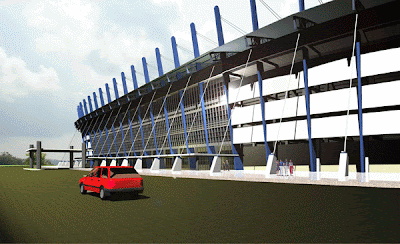Tanjungpinang in Bintan Island very strategic city over centuries, so with the air or sea transportation need for Riau isle and for Indonesia country.
Almost a year started rebuilt the field and airport in 1954, for the first time President Soekarno was landing onto the airport field in 1955 with Dakota plane on his journey to Johor-Malaysia, all at once legaly open and gave it a name ‘Kijang Airport’. Note: There was a time in 1961 where President Soekarno broke off diplomatic with Holland and chase away Holland’s KLM companies from Indonesia which made life in all Indonesia Islands in 1963 were miserable for hunger, there were no any sea transportations to sail and carried foods material to them.
On Tanjungpinang’s Regent era, Firman Edi was takehold of on 1971 – 1981, Kijang airport restored for first time and it started can be landed with Fokker-27 plane. The small beacon here is The International Air-Traffic Class which even The International Hang Nadim Airport in Batam is still under controls by Tanjungpinang’s R.H.Fisabilillah Airport.

What we can look to the airport building at these days, still has not many changed. Even that in 2002, Tanjungpinang City the new authorities by The Mayor of local government started planned to develop the airport, and in 2003 has got into their first city planning, The Tanjungpinang City’s RUTRK. And now with the new Governor territorial of Province Kepulauan Riau where also place in Tanjungpinang, they are both keep continue to the planning.
Tanjungpinang’s Airport was known before ‘Kijang Airport’, but they changed airport name appropiate with city’s new territorial as a name of local historic patriot and being “R.H. Fisabilillah Airport” several month ago at 2008.















